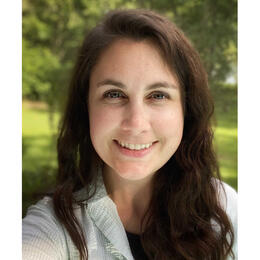Audubon biologist Alex Blochel loads up the Pathfinder boat at the Everglades Science Center (ESC), tossing in snorkel gear and measuring equipment for a full day of field work on the water. The dawn light has just crested the shiny leaves of Florida Bay mangroves, and he’ll need all the daylight he can get to measure submerged aquatic vegetation (SAV) waving beneath the surface of the water.
Aquatic vegetation is a key indicator of the salinity of Florida Bay. Plants are surveyed to assess upstream water management practices that heavily influence freshwater flows to the Bay and are changing as Everglades restoration proceeds. Additionally, sea-level rise will increase the salinity of the bay, especially if freshwater flows from upstream do not increase. The aquatic vegetation Blochel and the ESC team measure six times a year is a canary in the coal mine, forecasting future environmental conditions by responding to past water conditions.
Blochel anchors at their first study site, slipping into fins and pulling a snorkel mask tight over his face. Once into the water, he uses a 3 ft2 quadrat to measure SAV coverage in 12 areas near the boat, noting the species of grasses. When the bay sites are complete, he and his sampling partner transfer their gear to much smaller jon boats, motoring up the Taylor River to continue monitoring vegetation while simultaneously collecting hydrologic data, including an additional salinity measurement, water depth, and temperature.
“Every day on the water is an adventure,” Blochel explained. On a recent sampling trip, he decided to visually inspect nearby seagrass meadows after finishing his official data collection. While beneath the water, the urgent tapping of his teammate hitting the side of the boat caught his attention. Raising his head above water, he caught one word: “Crocodile!” Turning slowly, carefully, Blochel spotted just the eyes and snout of the giant reptile, which coexists with alligators in South Florida. While the croc was 90 feet away, that still felt much too close for Blochel. Swimming towards the boat at a measured pace – to avoid triggering the creature’s hunting brain – Blochel kept his cool while closing the distance between himself and safety. When the crocodile began moving towards him, Blochel swam faster, only heaving a sigh of relief when he successfully pulled himself over the bow of the boat. The crocodile disappeared as suddenly as it appeared, just one of the many creatures that call this complex ecosystem home.
Back in the lab, the Everglades Science Center staff crunch the numbers to create regular reports on how the aquatic vegetation changes in the bay and in the surrounding rivers over time. In addition to acting as a long-term metric of Everglades health, the reports are used by the South Florida Water Management District, the Army Corps of Engineers, and other stakeholders to analyze the impacts of upstream water management decisions earlier in the year.
The data provided by ESC, not only on aquatic vegetation but also on hydrology, fish species, nesting birds, and more, are an invaluable resource as Audubon Florida and our partners seek to restore the Everglades.




